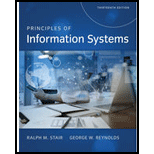
Community of practice (CoP):
- It is nothing but a group of members who shares their common interests and the set of goals in order to achieve their goals.
- CoP grows around topics that are essential to the members. Over time, it develops resources like tools, models, and documents that represent collected knowledge of the community.
Example: A group of oceanographers examining about climatic changes.
CoP is effective:
The formation of CoP is an effective way to share tacit knowledge among the scouts because it helps people to improve their practice by offering an opportunity to find out the keys to common problems and a process to gather and evaluate best practices.
Explanation of Solution
Factors considered in identifying which people to invite to join the CoP:
The two important categories to identify which people to invite to join the community of practice are as follows...
Explanation of Solution
Topics regarding “Transitioning to a new career” for the community to address:
Some of the key topics about “Transitioning to a new career” for the community to address are as follows...
Want to see the full answer?
Check out a sample textbook solution
Chapter 10 Solutions
Principles of Information Systems, Loose-Leaf Version
- Create a static function in C# where poachers appear and attempt to hunt animals. It gets the location of the closest animal to itself. Take account of that the animal also move too, so it should update the closest location (x, y) everytime it moves to a new location. Use winforms to show the movements of poachers.arrow_forwardCreate a static function in C# where poachers appear and attempt to hunt animals. It gets the location of the closest animal to itself. Take account of that the animal also moves too, so it should update the closest location (x, y) everytime it moves to a new location. Use winforms to show to movementsarrow_forwardI have to develop an efficient parallel numerical integration program on a 2-D mesh but I'm struggling. And it has to be in Cstararrow_forward
- An employee is departing from the company you work for. Explain why it could be best practice not to delete their user account but to lock it instead.arrow_forwardthe nagle algorithm, built into most tcp implementations, requires the sender to hold a partial segment's worth of data (even if pushed) until either a full segment accumulates or the most recent outstanding ack arrives. (a) suppose the letters abcdefghi are sent, one per second, over a tcp connection with an rtt of 4.1 seconds. draw a timeline indicating when each packet is sent and what it contains.arrow_forwardJust need some assistance with number 3 please, in C#arrow_forward
- How do we find the possible final values of variable x in the following program. Int x=0; sem s1=1, s2 =0; CO P(s2); P(s1); x=x*2; V(s1); // P(s1); x=x*x; V(s1); // P(s1); x=x+3; V(s2); V(s1); Ocarrow_forwardLab 07: Java Graphics (Bonus lab) In this lab, we'll be practicing what we learned about GUIs, and Mouse events. You will need to implement the following: ➤ A GUI with a drawing panel. We can click in this panel, and you will capture those clicks as a Point (see java.awt.Point) in a PointCollection class (you need to build this). о The points need to be represented by circles. Below the drawing panel, you will need 5 buttons: о An input button to register your mouse to the drawing panel. ○ о о A show button to paint the points in your collection on the drawing panel. A button to shift all the points to the left by 50 pixels. The x position of the points is not allowed to go below zero. Another button to shift all the points to the right 50 pixels. The x position of the points cannot go further than the You can implement this GUI in any way you choose. I suggest using the BorderLayout for a panel containing the buttons, and a GridLayout to hold the drawing panel and button panels.…arrow_forwardIf a UDP datagram is sent from host A, port P to host B, port Q, but at host B there is no process listening to port Q, then B is to send back an ICMP Port Unreachable message to A. Like all ICMP messages, this is addressed to A as a whole, not to port P on A. (a) Give an example of when an application might want to receive such ICMP messages. (b) Find out what an application has to do, on the operating system of your choice, to receive such messages. (c) Why might it not be a good idea to send such messages directly back to the originating port P on A?arrow_forward
 Principles of Information Systems (MindTap Course...Computer ScienceISBN:9781305971776Author:Ralph Stair, George ReynoldsPublisher:Cengage Learning
Principles of Information Systems (MindTap Course...Computer ScienceISBN:9781305971776Author:Ralph Stair, George ReynoldsPublisher:Cengage Learning Fundamentals of Information SystemsComputer ScienceISBN:9781305082168Author:Ralph Stair, George ReynoldsPublisher:Cengage Learning
Fundamentals of Information SystemsComputer ScienceISBN:9781305082168Author:Ralph Stair, George ReynoldsPublisher:Cengage Learning Fundamentals of Information SystemsComputer ScienceISBN:9781337097536Author:Ralph Stair, George ReynoldsPublisher:Cengage Learning
Fundamentals of Information SystemsComputer ScienceISBN:9781337097536Author:Ralph Stair, George ReynoldsPublisher:Cengage Learning Information Technology Project ManagementComputer ScienceISBN:9781337101356Author:Kathy SchwalbePublisher:Cengage Learning
Information Technology Project ManagementComputer ScienceISBN:9781337101356Author:Kathy SchwalbePublisher:Cengage Learning Enhanced Discovering Computers 2017 (Shelly Cashm...Computer ScienceISBN:9781305657458Author:Misty E. Vermaat, Susan L. Sebok, Steven M. Freund, Mark Frydenberg, Jennifer T. CampbellPublisher:Cengage Learning
Enhanced Discovering Computers 2017 (Shelly Cashm...Computer ScienceISBN:9781305657458Author:Misty E. Vermaat, Susan L. Sebok, Steven M. Freund, Mark Frydenberg, Jennifer T. CampbellPublisher:Cengage Learning Principles of Information Systems (MindTap Course...Computer ScienceISBN:9781285867168Author:Ralph Stair, George ReynoldsPublisher:Cengage Learning
Principles of Information Systems (MindTap Course...Computer ScienceISBN:9781285867168Author:Ralph Stair, George ReynoldsPublisher:Cengage Learning





